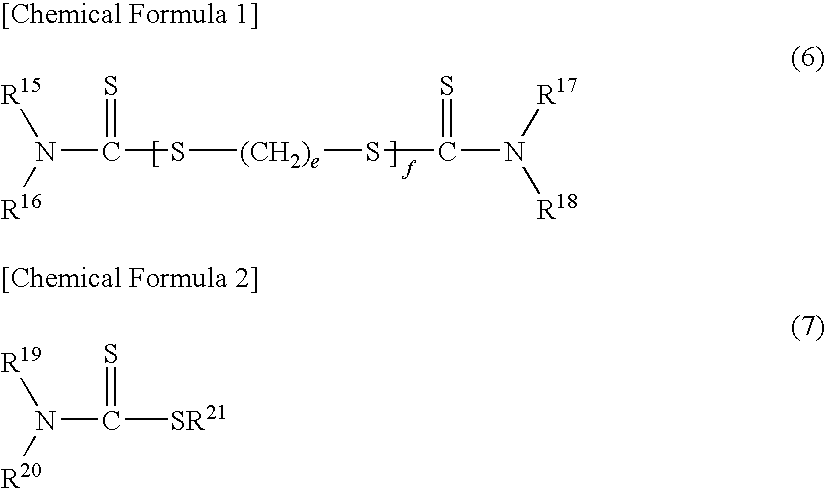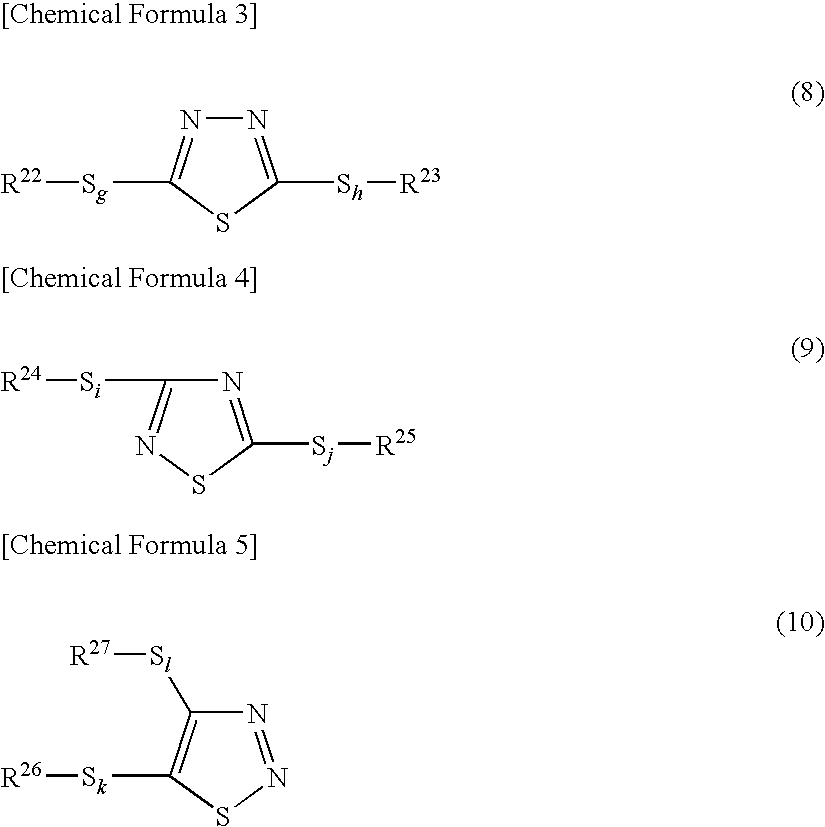Lubricant base oil, lubricant composition for internal combustion engine and lubricant composition for driving force transmitting device
a technology of lubricant composition and internal combustion engine, which is applied in the direction of lubricant composition, chemistry apparatus and processes, and lubricant composition, etc., can solve the problems of low lubricity and transmission device problems, and achieve excellent heat and oxidation stability, excellent viscosity temperature characteristics, and reduce energy loss
- Summary
- Abstract
- Description
- Claims
- Application Information
AI Technical Summary
Benefits of technology
Problems solved by technology
Method used
Image
Examples
examples
[0356]The present invention will now be explained in greater detail based on examples and comparative examples, with the understanding that these examples are in no way limitative on the invention.
examples 1-3
[0357]The fraction separated by vacuum distillation in the step of refining a solvent refined base oil was subjected to solvent extraction with furfural and then to hydrocracking, after which solvent dewaxing was performed with a methyl ethyl ketone-toluene mixed solvent. The slack wax removed during the solvent dewaxing was deoiled to obtain a wax portion (hereinafter referred to as “WAX1”) for use as a lubricating base oil starting material. The properties of WAX1 are shown in Table 1.
TABLE 1Starting material wax nameWAX1Kinematic viscosity at 100° C. (mm2 / s)6.8Melting point (° C.)58Oil portion (% by mass)6.3Sulfur content (ppm by mass)900
[0358]WAX1 was subjected to hydrocracking in the presence of a hydrocracking catalyst, under conditions with a hydrogen partial pressure of 5 MPa, a mean reaction temperature of 350° C. and an LHSV of 1 hr−1. The hydrocracking catalyst used was a sulfurized catalyst comprising 3% by mass nickel and 15% by mass molybdenum supported on an amorphous...
example 4
[0364]A mixture of 800 g of USY-zeolite and 200 g of an alumina binder was kneaded and molded into a cylindrical shape with a diameter of 1 / 16 inch (approximately 1.6 mm) and a height of 6 mm. The obtained molded article was fired at 450° C. for 3 hours to obtain a carrier. The carrier was impregnated with an aqueous solution containing dichlorotetraamineplatinum (II) in an amount of 0.8% by mass of the carrier in terms of platinum, and then dried at 120° C. for 3 hours and fired at 400° C. for 1 hour to obtain the catalyst.
[0365]Next, 200 ml of the obtained catalyst was packed into a fixed-bed circulating reactor, and the reactor was used for hydrocracking / hydroisomerization of the paraffinic hydrocarbon-containing feed stock oil. The feed stock oil used in this step was FT wax with a paraffin content of 95% by mass and a carbon number distribution from 20 to 80 (hereinafter referred to as “WAX2”). The properties of WAX2 are shown in Table 8. The conditions for the hydrocracking we...
PUM
| Property | Measurement | Unit |
|---|---|---|
| refractive index | aaaaa | aaaaa |
| kinematic viscosity | aaaaa | aaaaa |
| heat | aaaaa | aaaaa |
Abstract
Description
Claims
Application Information
 Login to View More
Login to View More - R&D
- Intellectual Property
- Life Sciences
- Materials
- Tech Scout
- Unparalleled Data Quality
- Higher Quality Content
- 60% Fewer Hallucinations
Browse by: Latest US Patents, China's latest patents, Technical Efficacy Thesaurus, Application Domain, Technology Topic, Popular Technical Reports.
© 2025 PatSnap. All rights reserved.Legal|Privacy policy|Modern Slavery Act Transparency Statement|Sitemap|About US| Contact US: help@patsnap.com



